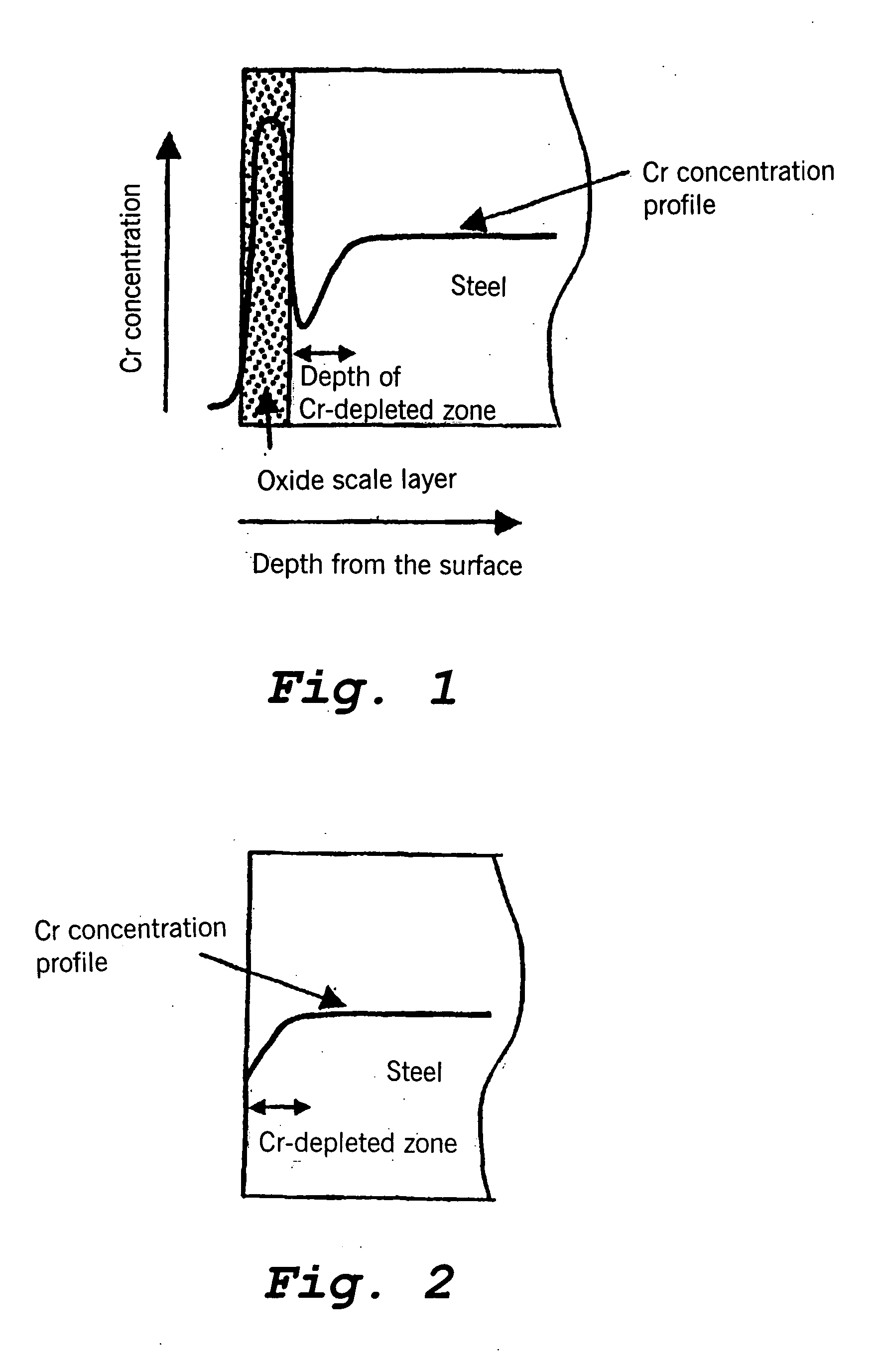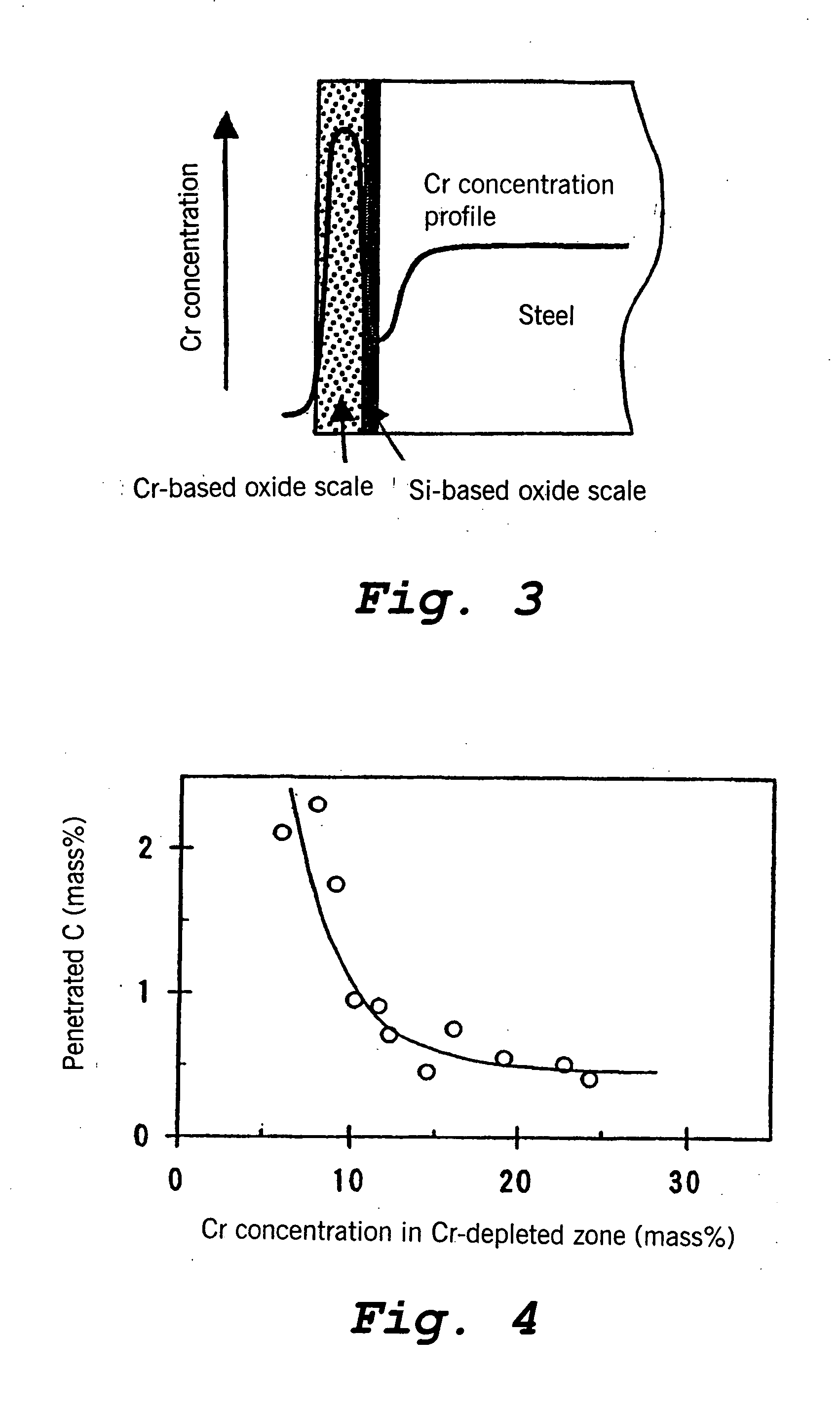Stainless steel and stainless steel pipe having resistance to carburization and coking
a technology of stainless steel pipe and resistance to carburization, which is applied in the direction of recording information storage, transportation and packaging, instruments, etc., can solve the problems of increasing pressure loss (p), reducing heating efficiency, and greatly reducing the operating efficiency of the furnace, so as to achieve the effect of preventing carburization
- Summary
- Abstract
- Description
- Claims
- Application Information
AI Technical Summary
Benefits of technology
Problems solved by technology
Method used
Image
Examples
examples
[0118] The present invention will be described in greater detail by the following examples, which are meant to be illustrative and do not limit the scope of the present invention.
[0119] Steels having the chemical compositions shown in Table 1 were melted in a high frequency vacuum heating furnace and formed into billets. The resulting billets were subjected to hot forging and cold rolling to prepare steel pipes with an outer diameter of 56 mm and a wall thickness of 6 mm. Each steel pipe underwent heat treatment under one of the four heat treatment conditions A-B described below. After heat treatment, the steel pipes were cut open, and some of the pipes were subjected to surface treatment in the form of shot blasting, pickling, or machining, while the remaining pipes were left in an as heat treated condition. For steel numbers 1-3 and 24 in Table 1, for each of the heat treatment conditions, heat treatment was carried out at 1200° C. for 10 minutes. For steel numbers 4-23, heat tre...
PUM
| Property | Measurement | Unit |
|---|---|---|
| thickness | aaaaa | aaaaa |
| thickness | aaaaa | aaaaa |
| thickness | aaaaa | aaaaa |
Abstract
Description
Claims
Application Information
 Login to View More
Login to View More - R&D
- Intellectual Property
- Life Sciences
- Materials
- Tech Scout
- Unparalleled Data Quality
- Higher Quality Content
- 60% Fewer Hallucinations
Browse by: Latest US Patents, China's latest patents, Technical Efficacy Thesaurus, Application Domain, Technology Topic, Popular Technical Reports.
© 2025 PatSnap. All rights reserved.Legal|Privacy policy|Modern Slavery Act Transparency Statement|Sitemap|About US| Contact US: help@patsnap.com



